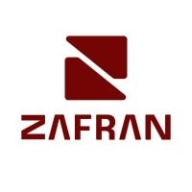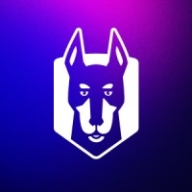


Snyk and Amazon Inspector compete in the security software market, each with distinct offerings tailored to different user needs. Snyk holds the upper hand in developer-centric integration and ease of use, while Amazon Inspector excels in automated vulnerability management and comprehensive dashboards.
Features: Snyk stands out with its simplicity, ease of integration, and a comprehensive vulnerability database. It supports numerous integrations, allowing developers easy access to self-service capabilities. Amazon Inspector provides automated vulnerability assessments and a robust dashboard for comprehensive management when paired with Security Hub. It efficiently categorizes findings to streamline vulnerability management.
Room for Improvement: Snyk could enhance its offering by incorporating additional scanning types like SAST or DAST, improving IDE plugins, API functionalities, and notification controls. Amazon Inspector's real-time protection, scanning scope, and broader AWS service integration require further enhancement. Additional automation in vulnerability remediation and reporting would increase its utility.
Ease of Deployment and Customer Service: Snyk offers diverse deployment options including private, public, hybrid cloud, and on-premises solutions, backed by strong technical support and proactive communication. Amazon Inspector, primarily cloud-based, also provides excellent customer support but lacks Snyk's deployment versatility.
Pricing and ROI: Snyk is a premium product that delivers high value, though its pricing may seem demanding. It enhances ROI by boosting developer productivity and ensuring comprehensive security. Amazon Inspector's tiered pricing model is affordable and aligns with market standards, offering scalability benefits. Both demonstrate solid ROI, although Snyk's extensive service capabilities may appeal to a wider audience.
| Product | Market Share (%) |
|---|---|
| Snyk | 3.1% |
| Zafran Security | 1.0% |
| Amazon Inspector | 2.6% |
| Other | 93.3% |



| Company Size | Count |
|---|---|
| Small Business | 3 |
| Midsize Enterprise | 2 |
| Large Enterprise | 4 |
| Company Size | Count |
|---|---|
| Small Business | 20 |
| Midsize Enterprise | 9 |
| Large Enterprise | 21 |
Zafran Security integrates with existing security tools to identify and mitigate vulnerabilities effectively, proving that most critical vulnerabilities are not exploitable, optimizing threat management.
Zafran Security introduces an innovative operating model for managing security threats and vulnerabilities. By leveraging the threat exposure management platform, it pinpoints and prioritizes exploitable vulnerabilities, reducing risk through immediate remediation. This platform enhances your hybrid cloud security by normalizing vulnerability signals and integrating specific IT context data, such as CVE runtime presence and internet asset reachability, into its analysis. No longer reliant on patch windows, Zafran Security allows you to manage risks actively.
What are the key features of Zafran Security?
What benefits can users expect from Zafran Security?
In industries where security is paramount, such as finance and healthcare, Zafran Security provides invaluable protection by ensuring that only exploitable vulnerabilities are addressed. It allows entities to maintain robust security measures while allocating resources efficiently, fitting seamlessly into existing security strategies.
Amazon Inspector is an automated security assessment service that helps improve the security and compliance of applications deployed on AWS. Amazon Inspector automatically assesses applications for exposure, vulnerabilities, and deviations from best practices. After performing an assessment, Amazon Inspector produces a detailed list of security findings prioritized by level of severity. These findings can be reviewed directly or as part of detailed assessment reports which are available via the Amazon Inspector console or API.
Amazon Inspector security assessments help you check for unintended network accessibility of your Amazon EC2 instances and for vulnerabilities on those EC2 instances. Amazon Inspector assessments are offered to you as pre-defined rules packages mapped to common security best practices and vulnerability definitions. Examples of built-in rules include checking for access to your EC2 instances from the internet, remote root login being enabled, or vulnerable software versions installed. These rules are regularly updated by AWS security researchers.
Snyk excels in integrating security within the development lifecycle, providing teams with an AI Trust Platform that combines speed with security efficiency, ensuring robust AI application development.
Snyk empowers developers with AI-ready engines offering broad coverage, accuracy, and speed essential for modern development. With AI-powered visibility and security, Snyk allows proactive threat prevention and swift threat remediation. The platform supports shifts toward LLM engineering and AI code analysis, enhancing security and development productivity. Snyk collaborates with GenAI coding assistants for improved productivity and AI application threat management. Platform extensibility supports evolving standards with API access and native integrations, ensuring comprehensive and seamless security embedding in development tools.
What are Snyk's standout features?Industries leverage Snyk for security in CI/CD pipelines by automating checks for dependency vulnerabilities and managing open-source licenses. Its Docker and Kubernetes scanning capabilities enhance container security, supporting a proactive security approach. Integrations with platforms like GitHub and Azure DevOps optimize implementation across diverse software environments.
We monitor all Vulnerability Management reviews to prevent fraudulent reviews and keep review quality high. We do not post reviews by company employees or direct competitors. We validate each review for authenticity via cross-reference with LinkedIn, and personal follow-up with the reviewer when necessary.